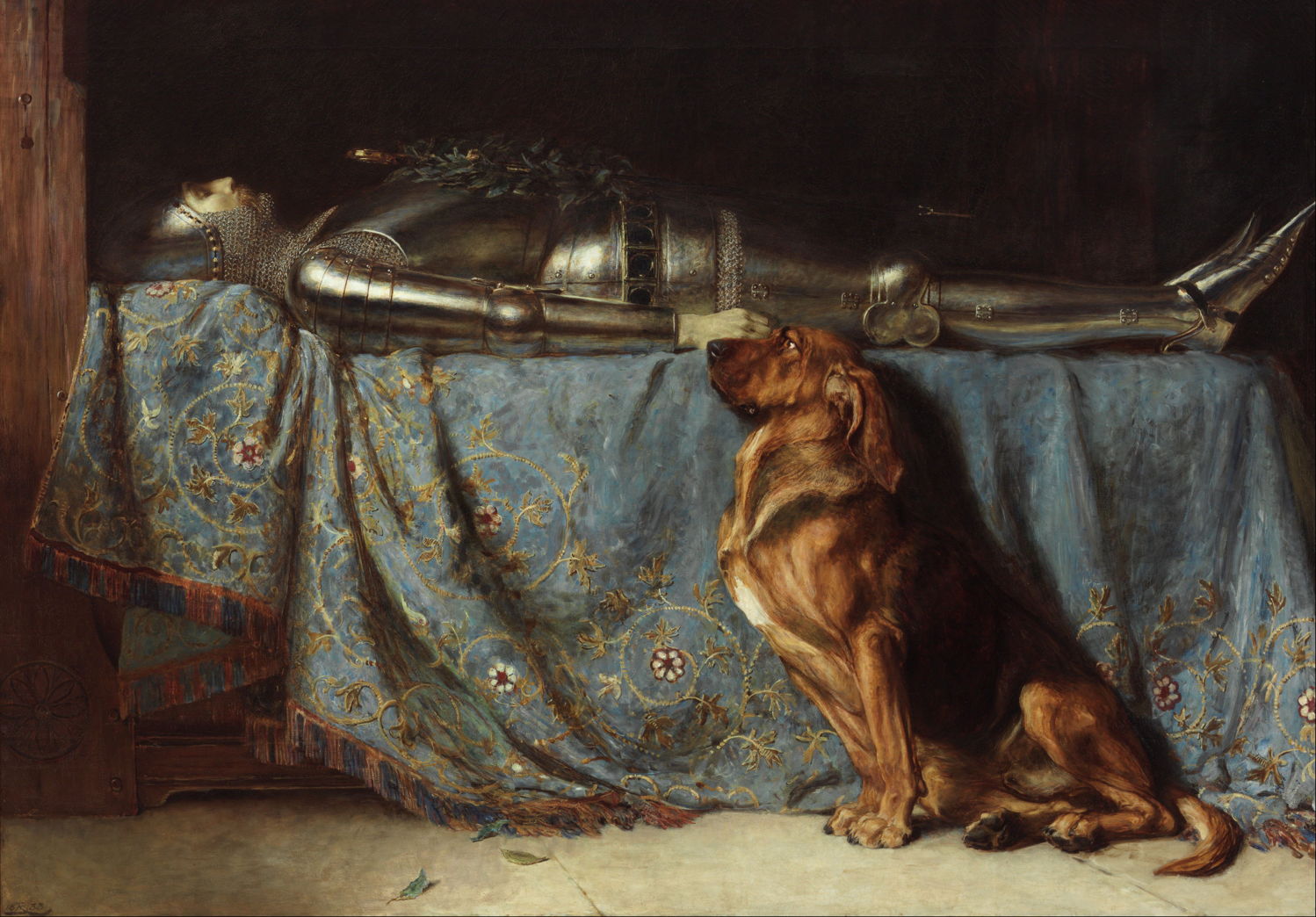Reading Visual Art: 223 Armour B
Lovis Corinth wasn’t the only artist to have his own suit of armour. Rembrandt apparently bought at least one, while Jean-Léon Gérôme seems to have kept a suit hanging in his studio.

The End of the Pose (1886) is the first of Gérôme’s series of unusual compound paintings, which are at once self-portraits of him as a sculptor, studies in the relationship between a model and their sculpted double, and further forays into issues of what is seen, visual revelation, and truth.
Here, while Gérôme cleans up, his model is seen covering up her sculpted double with sheets, as she remains naked. Hanging against the wall behind is a complete suit of armour, and there is a single red rose on the wooden platform on which the model and statue stand.
Armour has occasionally been purely symbolic, most famously in the collaborative painting of Touch by Jan Brueghel the Elder and Peter Paul Rubens in their series The Five Senses from 1618.

Touch extends beyond its title to encompass other tactile sensory modalities. Heat is associated with a brazier, fine touch with brushes nearby. Much of the panel is devoted to a collection of armour, weapons, and their manufacture by gunsmiths and armourers. The many suits on display, seen in the detail below, appear to be equipment that isolates rather than stimulates the sense of touch.

During the nineteenth century, many painters looked back at the age of knights and chivalry, which inspired German Romantics, Pre-Raphaelites, and some of the last academic artists of the century.

The crusades presented Carl Friedrich Lessing with an ideal combination of mediaeval history, romance, and chivalry. In The Return of the Crusader from 1835, he shows a lone knight in full armour dozing as his horse plods its way up a path from the coast. Although his armour is still shiny, a tattered battle pennant hangs limply from his lance. This is based on a Romantic poem by the writer Karl Leberecht Immermann (1796-1840).

Edmund Blair Leighton’s Conquest from 1884 shows a stereotype knight in shining armour walking through an arch with its portcullis raised, a fair maiden walking behind him, as this victor enters the castle he has just conquered. The knight appears to be an idealised self-portrait.

Leighton’s The Accolade (1901) apparently shows Henry VI the Good – of Poland, not the British Henry VI – being dubbed a knight. Every link in his chain mail has been crafted individually.

Manuel García Hispaleto’s Don Quixote’s Speech of Arms and Letters (1884) shows the hero, his squire Sancho Panza behind, delivering one of his many orations after dinner, in a full suit of armour, as you would.

Eugène Delacroix visited tales of chivalry in his Combat Between Two Horsemen in Armour, painted at some time between 1825-30.
Plate armour continued to be worn by soldiers well into the twentieth century, and appears in some paintings of contemporary history.

Paul-Émile Boutigny’s undated Scene from the Franco-Prussian War shows soldiers from both sides of this short war in 1870-71. The soldier on the left is French, and holds a French Chassepot musketon with a long yataghan bayonet, while his colleague on the right appears to be Prussian, with his pickelhaube spiked helmet and a heavy cavalry cuirass that’s essentially modernised armour. (I’m grateful to Boris for his expert interpretation of this motif.)

François Flameng’s undated scene of Germans from the First World War shows the odd combination of archaic plate armour with modern gas masks.
Finally, as everyone knows, a knight goes to their grave in their armour.

Briton Rivière’s Requiescat from 1888 epitomises the faithful relationship between a dog and its master. As the knight’s body is laid out clad in armour, so his dog sits pining by the side of his body.

